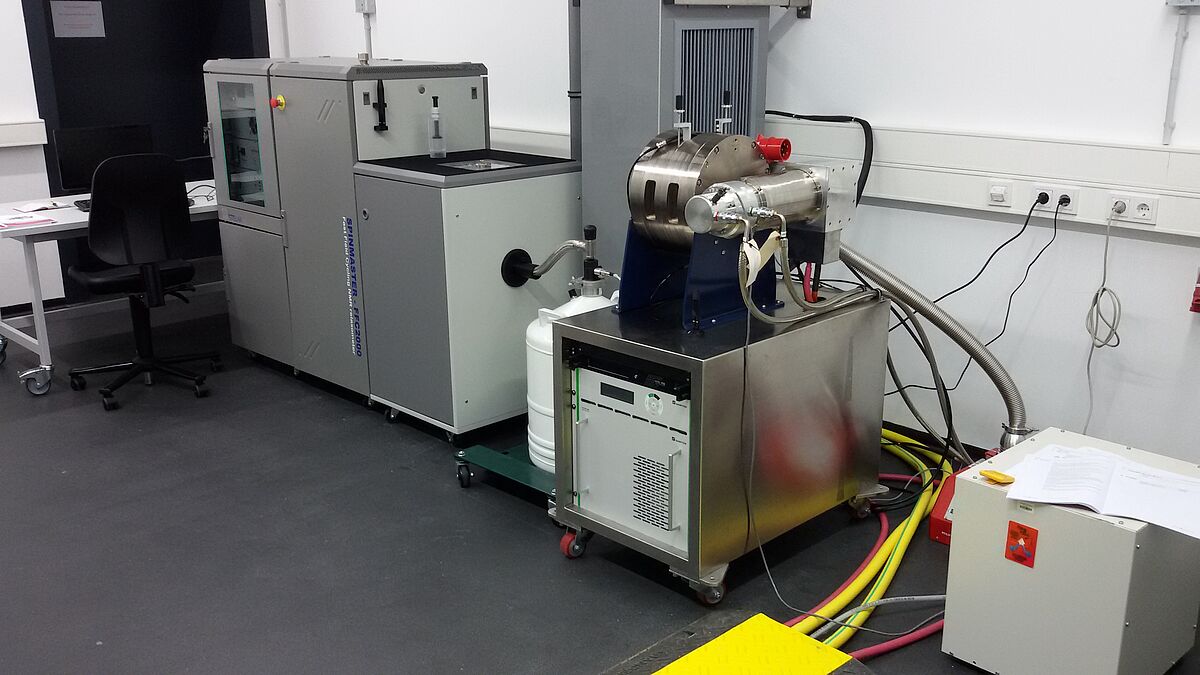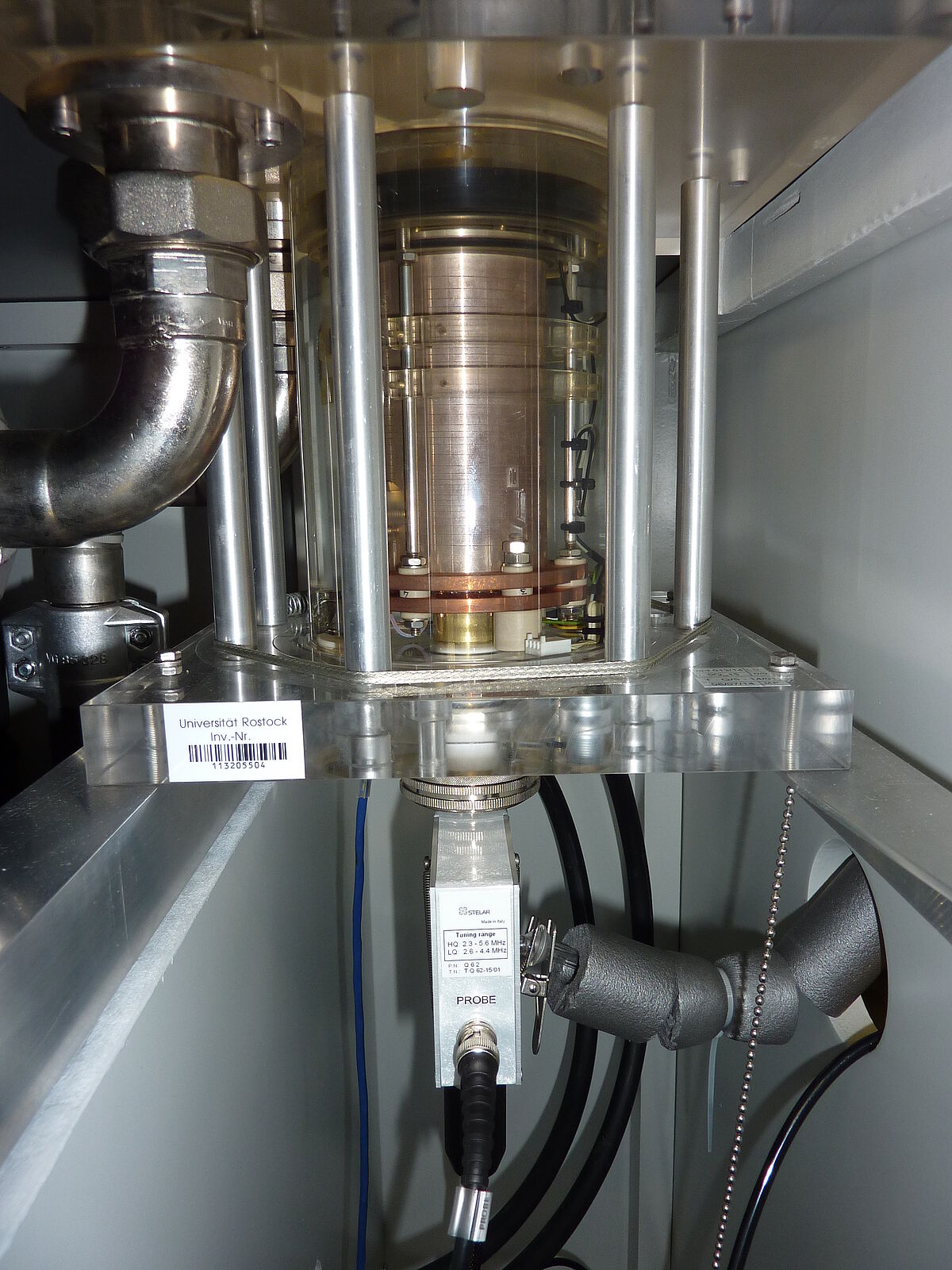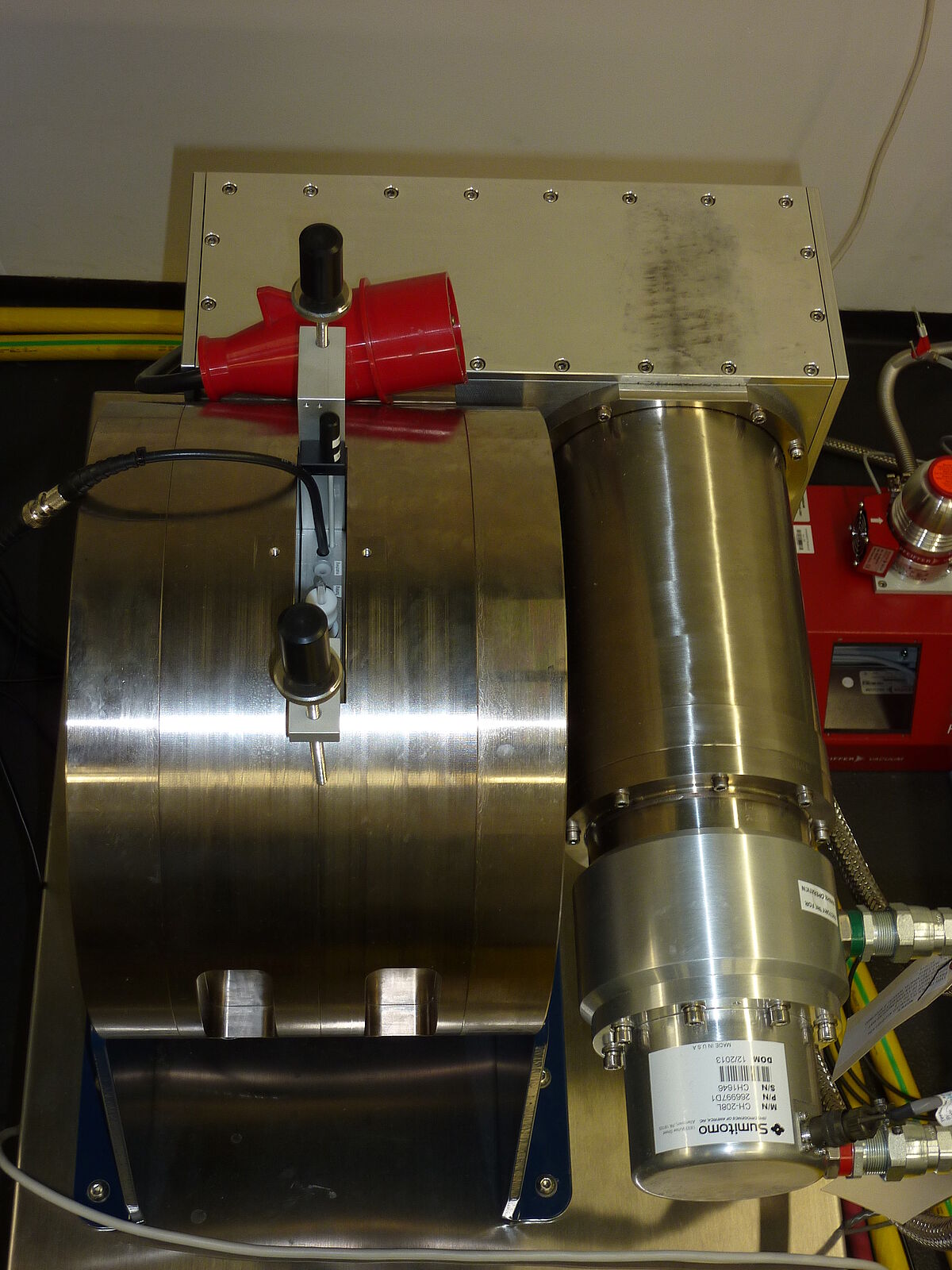Fast-Field-Cycling NMR relaxometry is a method for the determination of longitudinal relaxation times T1 of different NMR sensitive nuclei. Other than in conventional NMR, here the B0 magnetic field can be varied over several orders of magnitude (from 10-6 Tesla to 1 Tesla).
Such measurements result in a so called NMRD profile (D stands for dispersion) which plots the relaxation time or rate, respectively, versus the magnetic field strength, especially in the range beyond the “extreme narrowing limit w0t << 1“. From these profiles, useful information about the dynamics in complex liquids and liquid mixtures can be obtained, e.g. rotational correlation times or diffusion coefficients.
By applying the Fast-Field-Cycling technique, the FFC relaxometer “Spinmaster FFC2000”, manufactured by Stelar s.r.l., Italy, determines relaxation times of 1H, 2H, 19F or 13C nuclei in a B0 magnetic field switchable between 50 µT and 1 T (this corresponds to a 1H resonance frequency from 10 kHz to 42.6 MHz).
The instrument’s heart is a cylindrical, 4-layer solenoid cryogen-free magnet which is actively cooled via a double-circuit cooling system to achieve good field homogeneity and short switching times during field strength variation.
Liquid samples are inserted into the probe in 10mm NMR tubes. The sample temperature can be varied from -140 °C to +140 °C using a variable temperature controller..
The range of the tunable magnetic field can be extended up to 3 Tesla (128 MHz 1H Larmor frequency, respectively) by using an additional high-temperature superconducting magnet manufactured by HTS-110 Ltd., New Zealand. The split-pair coils are cooled by a Sumitomo (SHI) cryocompressor. Power supply and system control are established by a power supply unit made by Danfysik, Denmark.
Here, the sample measurement is done in standard 5mm NMR tubes.



